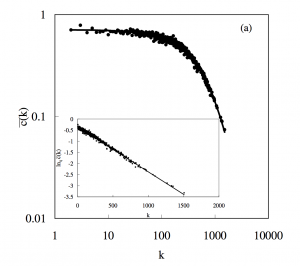A Network of Tremors
As is a recurring theme of Cornell University’s “Networks” course, networks of all kinds are pervasive. They appear in a variety of social and natural settings, and sometimes, they appear in the most unlikely places, yielding potent applications to contemporary societal issues.
Earthquakes pose large risks to society, particularly in populated areas. Japan, which lies above a significant subduction zone and is particularly prone to ‘great’ earthquakes, has continually initiated efforts to study, forecast, and predict earthquakes from a range of perspectives. As such, a 2009 study by a team of Japanese researchers has begun looking at seismic activity in a new way- by mapping earthquakes onto a random graph, or a “small-world…network”. This allowed the researchers to study the features of this network using conventional methods of graph theory. Here, I explore some key features of the study and the network under consideration.
The basis for the construction of their network of seismicity was simple and elegant. Firstly, a geographic region of interest was parametrized into small blocks, or ‘cells’, of a defined volume (dependent on fault size). If an event occurred within any of these cells, it was linked to a node. An edge was then drawn between nodes if earthquakes were successive (happened within a short time period of each other). Thus, a graph was built.
With this graph, analysis could successfully be conducted- the researchers analyzed the clustering coefficient of separate node: keep in mind that Easley and Kleinberg define the clustering coefficient as “the probability that two randomly selected friends of A (nodes linked to A by an edge) will be friends with each other). Analyzing this coefficient with respect to the quantitative connectivity of a vertex yields a clear relationship exhibiting a power-law based exponential decay of the clustering coefficient with connectivity, implying a hierarchical network structure.

Figure showing power-law and logarithmic decay of clustering coefficient with connectivity
Even more stimulating is the fact that the authors conclude that “This has a natural physical implication in the case of the earthquake network.” Although the physics of energy release from faults are a hot topic of study, many models imply stress release from faults upon slip (Movement on Faults)- this stress radiates outwards and may dynamically trigger other faults, yielding the hierarchical patterns seen.
In fact, seminal work in the past has shown that this approach is not only valid, but an inherent feature of earthquakes on a large scale. The classical Gutenberg-Richter relationship is an empirical law which, in essence, implies that large seismic events (earthquakes) necessarily have a number of smaller events associated with them.
The study can be downloaded here: http://arxiv.org/pdf/cond-mat/0602076.pdf
———-
1Abe, Sumiyoshi, and Norikazu Suzuki. “Complex earthquake networks: Hierarchical organization and assortative mixing.” Physical Review E 74.2 (2006): 026113.
2Easley, David, and Jon Kleinberg. Networks, Crowds, and Markets: Reasoning about a Highly Connected World. New York: Cambridge UP, 2010. Print.
3Gutenberg, B., and C. F. Richter. “Magnitude and energy of earthquakes.” (1955): 795-795.
